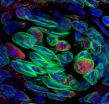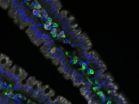(Press-News.org) San Diego, CA, March 8, 2011 – In the 1960s, a group of U.S. states with high age-adjusted stroke mortality defined a "stroke belt." Until recently, geographic patterns of diabetes had not been specifically characterized in the same manner. In an article published in the April 2011 issue of the American Journal of Preventive Medicine, researchers were able to identify clustered high prevalence areas, or a "diabetes belt" of 644 counties in 15 mostly southeastern states using data compiled for the first time of estimates of the prevalence of diagnosed diabetes for every U.S. county.
"Identifying a diabetes belt by counties allows community leaders to identify regions most in need of efforts to prevent type 2 diabetes and to manage existing cases of the disease," commented lead investigator Lawrence E. Barker, PhD, Division of Diabetes Translation, National Center for Chronic Disease Prevention and Health Promotion, Centers for Disease Control and Prevention (CDC), Atlanta, GA. "Although many risk factors for type 2 diabetes can't be changed, others can. Community design that promotes physical activity, along with improved access to healthy food, can encourage the healthy lifestyle changes that reduce the risk of developing type 2 diabetes."
Nearly one third of the difference in diabetes prevalence between the diabetes belt and the rest of the U.S. is associated with sedentary lifestyle and obesity. Thirty percent of the excess risk was associated with modifıable risk factors, and 37% with nonmodifıable factors, such as age and race/ethnicity.
Data from the diabetes belt showed prevalence rates greater than 11.0% or higher. By comparing demographics and risk factors such as gender, age, education, sedentary lifestyle, obesity, and race/ethnicity, they found four factors that distinguished the diabetes belt from the rest of the country.
Population of the diabetes belt counties contained substantially more non-Hispanic African Americans compared to the rest of the country (23.8% for the diabetes belt, 8.6% for the rest of the country).
Prevalence of obesity (32.9% vs. 26.1%) was greater in the diabetes belt than in the rest of the U.S.
Sedentary lifestyle (30.6% vs. 24.8%) was greater in the diabetes belt than in the rest of the U.S.
Proportion of people with a college degree was smaller (24.1% vs. 34.3%).
644 counties make up the diabetes belt. This belt includes portions of the states of Alabama, Arkansas, Florida, Georgia, Kentucky, Louisiana, North Carolina, Ohio, Pennsylvania, South Carolina, Tennessee, Texas, Virginia, and West Virginia, as well as the entire state of Mississippi.
According to Dr. Barker, "People who live in the diabetes belt will reduce their chance of developing type 2 diabetes if they are more active physically and, for those who are overweight or obese, if they lose weight. Taking these steps will eventually lower the prevalence of diabetes within the diabetes belt."
INFORMATION:
The article is "Geographic Distribution of Diagnosed Diabetes in the U.S.: A Diabetes Belt" by Lawrence E. Barker, PhD, Karen A. Kirtland, PhD, Edward W. Gregg, PhD, Linda S. Geiss, MA, and Theodore J. Thompson, MS. It appears in the American Journal of Preventive Medicine, Volume 40, Issue 4 (April 2011) published by Elsevier. doi: 10.1016/j.amepre.2010.12.019.
END
PHILADELPHIA (March 7, 2011) – A new research study dramatically increases knowledge of how taste cells detect sugars, a key step in developing strategies to limit overconsumption. Scientists from the Monell Center and collaborators have discovered that taste cells have several additional sugar detectors other than the previously known sweet receptor.
"Detecting the sweetness of nutritive sugars is one of the most important tasks of our taste cells," said senior author Robert F. Margolskee, M.D., Ph.D., a molecular neurobiologist at Monell. "Many of us eat too much sugar ...
The intestinal epithelium consists of four main specialized cell lineages: absorptive enterocytes and three secretory cell types known as enteroendocrine, Paneth, and goblet cells. But a rare, fifth type of intestinal cell called tuft cells also exists. Defined by the thick brush of long microvilli that project from their apical surface, tuft cells are seen in several epithelial tissues, yet little is known about their function due to a lack of tuft cell–specific markers.
In the March 7 issue of The Journal of Cell Biology (www.jcb.org), a team of French researchers ...
Patients with Parkinson's disease (PD) suffer a specific loss of dopaminergic neurons from the midbrain region that controls motor function. The exact mechanism of this selective neurodegeneration is unclear, though many lines of evidence point to dysfunctional mitochondrial complex I as one root cause of the disease. Yet new research now suggests that defective regulation of microtubules may be responsible for at least some cases of PD. The study appears in the March 7 issue of The Journal of Cell Biology (www.jcb.org).
Mitochondria were first implicated in PD when ...
The immune system is capable of recognizing tumor growth, and naturally mounts an anti-cancer defense. Dendritic cells (DCs) can take up tumor-derived molecules (antigens) and present them to T cells, and those "primed" T cells are then able to recognize and kill tumor cells. In recent years, researchers have attempted to capitalize upon these natural immune responses to develop new therapies- namely, by generating a pool of tumor antigen-pulsed DCs that might be used as vaccines to augment the T-cell responses of cancer patients. In clinical trials, these DC vaccines have ...
EDITOR'S PICK
Using a molecular switch to turn on cancer vaccines
The immune system is capable of recognizing tumor growth, and naturally mounts an anti-cancer defense. Dendritic cells (DCs) can take up tumor-derived molecules (antigens) and present them to T cells, and those "primed" T cells are then able to recognize and kill tumor cells. In recent years, researchers have attempted to capitalize upon these natural immune responses to develop new therapies- namely, by generating a pool of tumor antigen-pulsed DCs that might be used as vaccines to augment the T-cell responses ...
WINSTON-SALEM, NC – March 7, 2011 – Researchers at the Institute for Regenerative Medicine at Wake Forest University Baptist Medical Center and colleagues reported today on a new advance in tissue engineering. The team is the first in the world to use patients' own cells to build tailor-made urinary tubes and successfully replace damaged tissue.
In an article published Online First by The Lancet, the research team reports replacing damaged segments of urinary tubes (urethras) in five boys. Tests to measure urine flow and tube diameter showed that the engineered tissue ...
The use of media characters on cereal packaging may influence children's opinions about taste, according to a report in the March issue of Archives of Pediatrics & Adolescent Medicine, one of the JAMA/Archives journals.
"The use of trade (e.g. Ronald McDonald) and licensed (e.g. Shrek) spokescharacters is a popular marketing practice in child-directed products because the presence of these figures helps children identify and remember the associated product," the authors write as background information in the article. Because children remember nonverbal representations ...
On International Women's Day (8th March), the European Society of Cardiology (ESC) is calling for action to reduce the gender disparities that are currently resulting in women receiving second rate cardiovascular (CV) care. Studies published online today in the European Heart Journal (EHJ), ¹ ² the official journal of the ESC, show a persistent under-utilisation of guideline recommended treatments for heart disease in women compared to men.
"The ESC wants to raise awareness, among both cardiologists and the public, that women still are not receiving equal access to ...
Most young adults who grow up with chronic illness graduate high school and have employment, but those with cancer, diabetes, or epilepsy are significantly less likely than their healthy peers to achieve important educational and vocational milestones, according to a report in the March issue of Archives of Pediatrics and Adolescent Medicine, one of the JAMA/Archives journals.
"In the United States, despite the variation in estimates, it is generally accepted that as many as 12 percent of children have special health care needs, including physical and emotional problems," ...
Middle school-aged children who participated in interactive digital gaming activities that feature player movement (exergaming), such as dancing or boxing, increased their energy expenditure to a level of moderate or vigorous intensity, according to a report posted online today that will appear in the July print issue of Archives of Pediatrics & Adolescent Medicine, one of the JAMA/Archives journals.
"The prevalence of overweight children and adolescents has increased drastically over the past several decades. This increase is troubling given the potentially numerous ...


